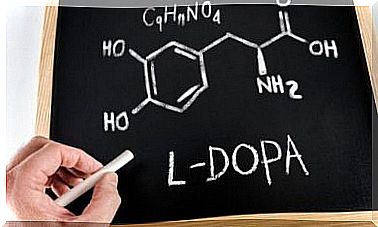Adhesive Capsulitis: Everything You Need To Know

Adhesive capsulitis is defined as a progressive loss of passive movement of the shoulder. This loss of mobility, also known as frozen shoulder, is accompanied by widespread pain that predominates in the anterolateral area of the shoulder.
Several authors have described the possible causes and pathological changes occurring in the glenohumeral joint capsule and surrounding tissues. The course of this disorder is insidious, progressive and, in most cases, self-limiting.
This injury occurs most often in people between the ages of 40 and 70. Furthermore, it is more common in women and in patients suffering from thyroid disease or diabetes.
On the other hand, and as we will see later, the treatment is aimed at recovering the mobility and functionality of the joint. It will also focus on pain relief through drug administration or, ultimately, surgery.
Shoulder anatomy

The shoulder is the part of the body where the arm joins the rest of the body. In fact, it is the joint with the greatest range of motion in the human body. To be exact, it is formed by the union of the ends of 3 bones:
- Clavicle.
- Scapula.
- Homer.
These three bones are joined by muscles, ligaments and tendons which allow their mobility. Hence, the main shoulder joint is the one that joins the head of the humerus to the scapula, called the scapulohumeral joint.
It has two articular surfaces: one is the humeral head, which is hemispherical in shape, and the other is the glenoid cavity of the scapula. Both surfaces are covered with cartilage, which allows for smooth and painless movement.
Consequently, the set of muscles and tendons that attach to the bone surfaces make it possible to move the joint. For example, the rotator cuff, made up of four muscles, provides mobility and stability to the shoulder.
Causes of adhesive capsulitis
Several authors suggest that this injury is autoimmune in nature. However, serological tests do not confirm this theory. Others suggest that it is a variant of reflex sympathetic dystrophy. However, even this theory has not been fully accepted, as there would be no improvement in this case.
Some specialists argue that the main cause of this injury is muscle inactivity. Causes of the lack of scapulohumeral mobility include:
- Bicipital tenosynovitis.
- Calcaneal tendinitis.
- Bruises.
- Fractures.
- Capsular scarring secondary to injury or surgical procedures.
Treatment of adhesive capsulitis

As anticipated, the treatment aims to restore the mobility and functionality of the shoulder. In addition, anti-inflammatory drugs or steroids will be given to calm the pain. In severe cases, the patient may undergo arthroscopy.
Since this pathology has two distinct phases, one in which pain predominates and the other in which stiffness predominates, the physiotherapy treatment changes.
During the first phase, the pain is intense and occurs even when the person is at rest. The treatment will therefore be aimed at controlling pain and guaranteeing the patient the maximum range of motion of the shoulder.
As the pain subsides, focus will be placed on increasing the range of motion of the joints. For this purpose, a series of exercises are performed that involve the rotator cuff, as it is involved with the joint capsule.
Last but not least, it is necessary to explain to the patient that other parts of the body can also be affected by this condition. With pain and reduced mobility, it is normal to try to compensate by overusing other muscles.
In this way, pain can also be felt in the cervical or lumbar spine, due to the tension that the tissues of these areas receive as a result of incorrect movements.
Conclusions
Adhesive capsulitis, or frozen shoulder, is an injury that affects, as the name suggests, the shoulder joint. The latter significantly loses its mobility and functionality, as well as causing pain that can become very annoying.
Consult a professional about the treatments best suited to your case. Clarify any doubts you may have about this annoying injury with a physiotherapist.









